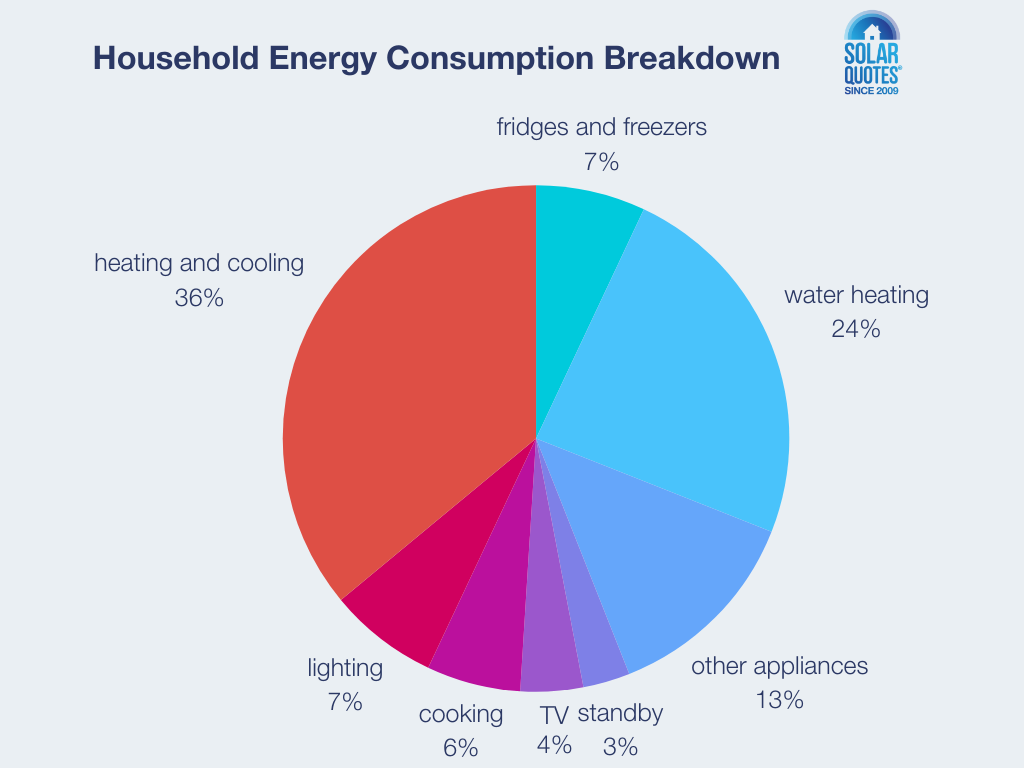Energy Efficiency: Where Is Your Electricity Being Used?
Last Updated: 13th Jan 2025 By Finn Peacock, Chartered Electrical Engineer
The average Australian house uses 18 kWh of electricity per day. Average consumption has gone up in recent years, thanks in part to the plethora of electrical devices in or attached to our homes.
So, What Is A KWh?
KWh stands for kilowatt-hour; a unit of energy (not power1). It’s the amount of electrical energy used by an device that draws 1kW of power if it is left on for an hour.
An example of a device that draws around 1kW is a small pool pump. A typical pool pump will use about 1kWh of electricity for every hour it is running. That can add up quickly.
Other ways to better understand how much energy a kWh is:
- 1200 electric shaves
- Drying your hair 15 times
- 4 TV evenings
- Using a (small) refrigerator for 24 hours
- 20 microwave meals
- Drilling 250 holes
- 4 evenings of light with 60 W incandescent lamps
- 27 evenings of light with 9 W LED lamp (60W incandescent equivalent – a big difference!)
If you can dig up a recent electricity bill, have a look at it. It will tell you how many kWh you averaged per day over the last billing period.
Becoming An Energy-Efficient Household
Some households in Australia get by on consuming just 5-6kWh per day; far less than the average. And these aren’t all super-efficient green homes. Many have just followed a methodical process to see what their top energy guzzlers are, and then made an investment to fix up the worst performers.
The way to get started is to focus on the big energy users in your home first. Here’s a breakdown of energy use in a typical Australian household:

- Heating and Cooling
- Water Heating
- Other Appliances
- Fridges and freezers
- Lighting
Power Meters And Appliance Ratings
If you want to get into the nitty gritty of how much various appliances you own are using, a handy gadget is a power meter. I explain more about power meters here, but basically you plug the device into a wall, and then the appliance into that and it will show energy consumption on the screen.
But power meters aren’t much good for hard-wired devices such as a electric stoves or hot water systems, and you shouldn’t need one for other appliances anyway. Just look for a label on the appliance that shows its power rating; which will be the *maximum* draw.
For example, a small space heater may be rated at 2,400 watts. This means that for each hour of use at its highest setting, it will consume 2.4 kWh.
The Standby Power Myth
By the way, see how standby power only accounts for 3% of your bill? So why does almost all the advice you get start and end with “switch everything off at the wall”? You can run around all day like a headless chook – but it will only take 3% off a typical bill. A saving, yes, but perhaps not where your focus should lie initially.
I’ll start with the easiest one. Lighting only makes up 7% of an average home’s bill – but it is so easy and cheap to use modern LED technology to get your lighting bills down to almost nothing, that I suggest tackling your lights first. If you have halogen downlights in your home, then this first step is absolutely essential!
So, let’s get started on LED lighting!
- Learn more about the difference between energy and power here. ↩